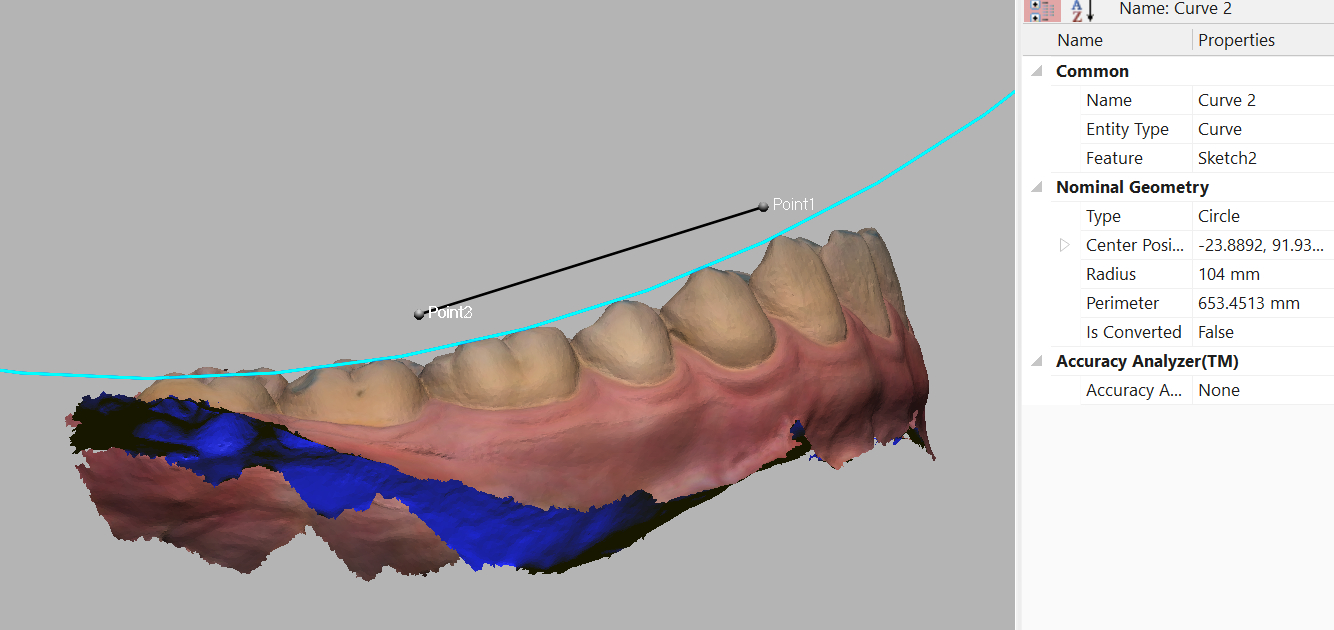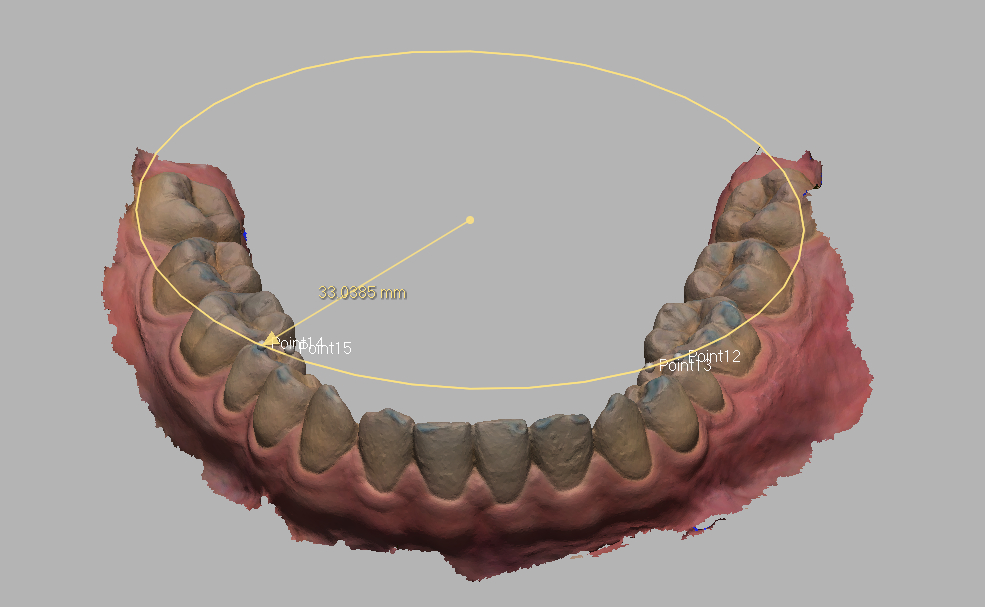IADR Abstract Archives
Relationship Between The 3D Dental Arch Characteristics And Bite Force
Objectives: This study aimed to assess the relationships between dental arch width, occlusal curves, and the maximum bite force (MBF) in dental arch widths in Angle’s class I healthy adults.
Methods: Subjects were 36 adults (18 males and 18 females) aged 18-25, with Angle’s class I occlusions and healthy dentitions. 3D models of each participant were recorded using the same intra-oral scanner (TRIOS 3, 3Shape, Denmark). All 3D data was calibrated and analyzed using Geomagic Design X (3D Systems, United States). The processing procedure included two steps: reorientation and measuring. First, the horizontal reference plane was set from 3 landmarks (incisive papilla and the intersection of the palatal sulci of the first permanent molars with the gingival margin). Then the sagittal and frontal plans were defined accordingly. Second, arch width and occlusal curves (Spee curve and Wilson curve) were measured for each subject. 3 arch width parameters between canine cusps, bucco-mesial cusps of first molars, and bucco-distal cusps of second molars were calculated in the horizontal plane. The maximum bite force was recorded by a digital occlusal force gauge (BFM 4th generation, Vietnam). Paired t-tests were used to compare the means between sides (left and right) and genders (male and female). Pearson's correlation coefficient was performed to evaluate the statistical relationships (p<0.05).
Results: The correlation coefficient between the radius of Spee curve and MBF was 0.53 (moderate positive correlation, p<0.05). The correlation coefficient between the radius of Wilson curve at the first premolar, second premolar, first molar, and second molar and MBF were 0.37, 0.54 (moderate positive correlation, p<0.05), 0.64 and 0.60 (strong positive correlation, p<0.05), respectively. There was no significant relation between dental arches width and MBF (p>0.05).
Conclusions: MBF might be influenced by occlusal curvatures but not related to the dental arch width. The three-dimensional analysis of occlusal curvatures may be a valuable predictor of the masticatory function.
Methods: Subjects were 36 adults (18 males and 18 females) aged 18-25, with Angle’s class I occlusions and healthy dentitions. 3D models of each participant were recorded using the same intra-oral scanner (TRIOS 3, 3Shape, Denmark). All 3D data was calibrated and analyzed using Geomagic Design X (3D Systems, United States). The processing procedure included two steps: reorientation and measuring. First, the horizontal reference plane was set from 3 landmarks (incisive papilla and the intersection of the palatal sulci of the first permanent molars with the gingival margin). Then the sagittal and frontal plans were defined accordingly. Second, arch width and occlusal curves (Spee curve and Wilson curve) were measured for each subject. 3 arch width parameters between canine cusps, bucco-mesial cusps of first molars, and bucco-distal cusps of second molars were calculated in the horizontal plane. The maximum bite force was recorded by a digital occlusal force gauge (BFM 4th generation, Vietnam). Paired t-tests were used to compare the means between sides (left and right) and genders (male and female). Pearson's correlation coefficient was performed to evaluate the statistical relationships (p<0.05).
Results: The correlation coefficient between the radius of Spee curve and MBF was 0.53 (moderate positive correlation, p<0.05). The correlation coefficient between the radius of Wilson curve at the first premolar, second premolar, first molar, and second molar and MBF were 0.37, 0.54 (moderate positive correlation, p<0.05), 0.64 and 0.60 (strong positive correlation, p<0.05), respectively. There was no significant relation between dental arches width and MBF (p>0.05).
Conclusions: MBF might be influenced by occlusal curvatures but not related to the dental arch width. The three-dimensional analysis of occlusal curvatures may be a valuable predictor of the masticatory function.



